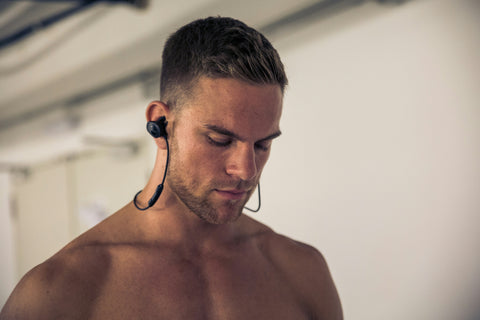Ever hit the gym, pop in your earbuds, and suddenly feel like a superhero? You’re not imagining things—music has a real impact on how we move, feel, and perform during our workouts.
Whether you’re pushing through your final set of deadlifts or flowing through a yoga session, the right soundtrack can make all the difference. In this week's Kickstart, we're diving into the science and strategy behind using music to enhance your workouts—and how the genre or tempo you choose can actually elevate your performance.
How Music Impacts the Mind and Body During Exercise
Music isn’t just background noise. It activates the brain’s reward system, releasing dopamine, which boosts your mood and helps reduce perceived effort. This means you may actually feel like your workout is easier—or more enjoyable—when you’ve got your favorite track playing.
Research shows that music can:
-
Increase endurance and motivation
-
Improve motor coordination and rhythm
-
Distract from fatigue and discomfort
-
Elevate mood and focus
Tempo Matters: Match Your BPM to Your Workout
When it comes to movement, beats per minute (BPM) play a big role. Here's a quick guide to matching tempo to training intensity:
| Workout Type | Ideal BPM Range | Genre Examples |
|---|---|---|
| Warm-Up / Cool-Down | 90–120 BPM | R&B, acoustic, chill pop |
| Steady-State Cardio | 120–140 BPM | Classic pop, indie rock, lo-fi |
| HIIT / Circuit Training | 140–170 BPM | EDM, trap, fast-paced hip-hop |
| Heavy Lifting | 130–150 BPM | Rock, hip-hop, motivational rap |
| Yoga / Stretching | 60–100 BPM | Ambient, instrumental, soft indie |
The tempo you choose can help pace your movement, regulate breathing, and give you an extra psychological boost.
Genre Vibes: Pick Your Power-Up
Here’s how different genres can align with your fitness goals:
-
Hip-Hop & Rap – Boosts confidence, aggression, and swagger—great for lifting or power workouts.
-
Electronic / EDM – High energy and steady beats keep you moving during cardio or circuits.
-
Rock & Alternative – Brings intensity and grit; ideal for strength training or sprints.
-
Pop – Uplifting and easy to sing along to—good for general movement and mood.
-
Lo-Fi & Acoustic – Helps slow the mind and body—perfect for recovery days or cool-downs.
-
Instrumentals / Soundtracks – Dramatic and cinematic; use them when you want to feel unstoppable.
Pro Tips for Creating Your Workout Playlist
-
Tailor it to your workout type – High tempo for high energy; slower tracks for recovery.
-
Use playlist transitions – Start slow, build up, then wind down.
-
Include a few “anchor songs” – Songs that always fire you up.
-
Don’t be afraid to experiment – Try new genres or remixes to keep things fresh.
This Week’s Challenge: Curate Your Own Power Playlist
This week, take a few minutes to build your own workout playlist tailored to your favorite training style. Whether it’s a 20-minute HIIT burner or a long lifting session, see how your body and mindset shift when your music is aligned with your goals.
And if you're already using music—try switching it up. You might be surprised how much your performance improves.
Final Thought
Your workouts aren’t just about sets and reps—they’re about energy, rhythm, and flow. Music taps into the emotional and physical sides of fitness, helping you unlock a higher level of performance and enjoyment. So the next time you gear up to train, don’t just press play—press power.
Stay strong. Stay motivated.
– Vital Vibe Health and Fitness




